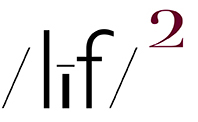“There are no rules for good photographs, there are only good photographs….The so-called rules of photographic composition are, in my opinion, invalid, irrelevant, immaterial.” ~ Ansel Adams
“Consulting the rules of composition before taking a photograph, is like consulting the laws of gravity before going for a walk.” ~ Edward Weston
IN MY LAST ENTRY, re: ideas on making an interesting photograph, I mentioned the idea that it is form, rather than the depicted referent, that is the most important element in creating interesting an photograph. And, I described form as the visual expression of “how the picture maker has “arranged”-by means of his/her framing and POV-line, shape, space, tone (value), and color across the 2D visual field of a print.
That written, it is quite possible that I should not be using the word “form” to describe the visual characteristic that I strive to illustrate in my photographs and appreciate in the photographs made by others. Technically, according to Tate Modern, my usage is correct:
In relation to art the term form has two meanings: it can refer to the overall form taken by the work – its physical nature; or within a work of art it can refer to the element of shape among the various elements that make up a work.
As you might surmise, I hang my picture making hat, re: form, on the idea of the element of shape among the various elements (to include line, space, tone, and color) that make up a work of art. However-and here’s the rub, re: maybe I should not use the word “form”-cuz if you were to search the interweb for “form in photography” you would discover that the genii in the photo commentariat world have decided that form…
“…refers to the three-dimensional appearance of shapes and objects in a photo…[and] is all about subjects that stand out as if they're 3D objects.”
and, get this awesome insight..
“Successfully conveying all three dimensions in a two dimensional medium is a great artistic accomplishment”
ASIDE from the song Assholes on parade: Assholes to the left…And assholes to the right … I once heard it said…That old assholes never die…They just lay in bed…And multiply END ASIDE
another ASIDE I realize the preceding aside is rather harsh but…the interweb is chock full of bad photo making advice, especially so from “experts” and workshop leaders and it gets me to setting my teeth on edge. END ASIDE
I’m sorry, but, the use of leading lines and value (tone - you know shadow and light) to create the faux appearance of 3D shape and/or depth in a 2D art form, aka: photography, is a very fer piece down the pike from a “great artistic accomplishment”. And, it has little to do, if anything, with the idea of form as seen and perceived in the Art World.
So, in my use of the word form to describe an important visual tool in my photo bag of tricks, I worry that the mis/mal-informed out there might get the wrong impression.
All of the above written, stay tuned for my next entry wherein I describe in greater detail much more exactly what I believe to be the good form that I strive to illustrate in my photographs.
PS the pictures in this entry all present, if one chooses to look at them in that way, a sense of depth. That, however, is not how I view them nor is why I made them.
